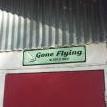Sign in to follow this
Followers
0

Pitot tube attachment
Started by
Shipl14,
5 posts in this topic
Create an account or sign in to comment
You need to be a member in order to leave a comment
Sign in to follow this
Followers
0